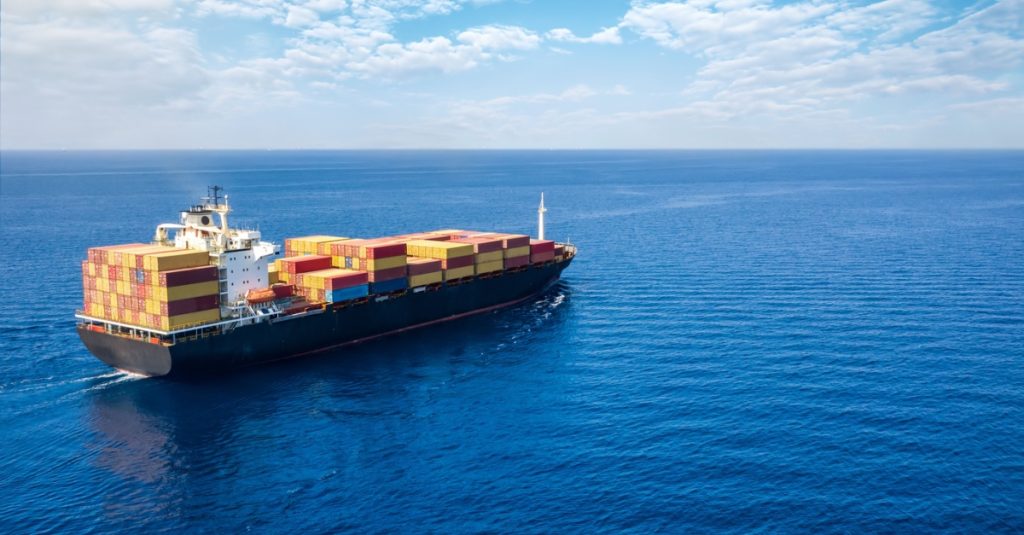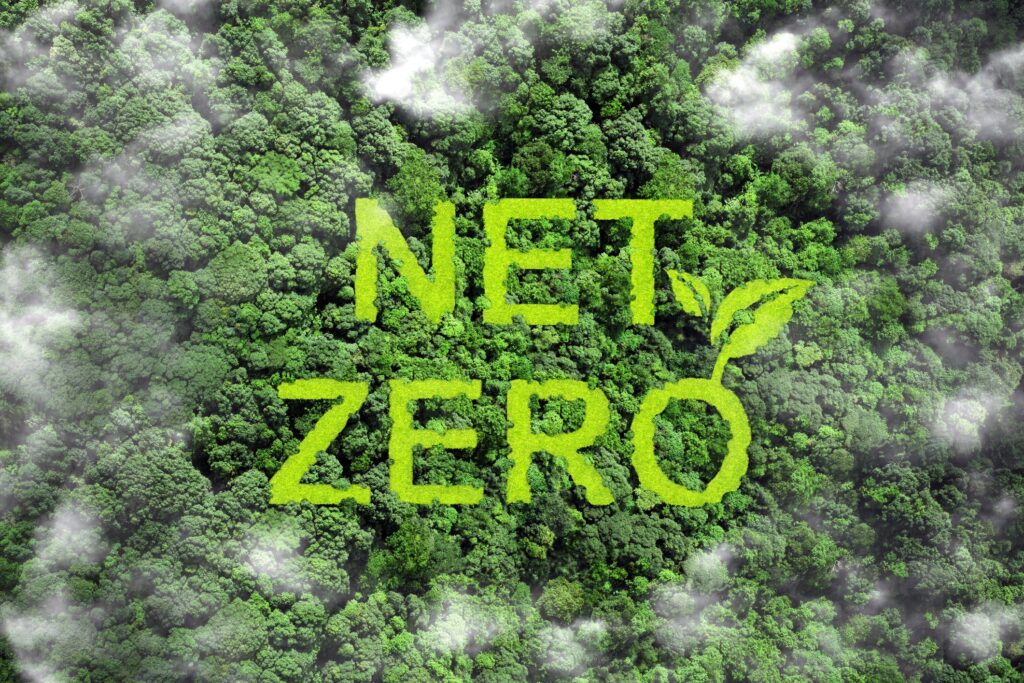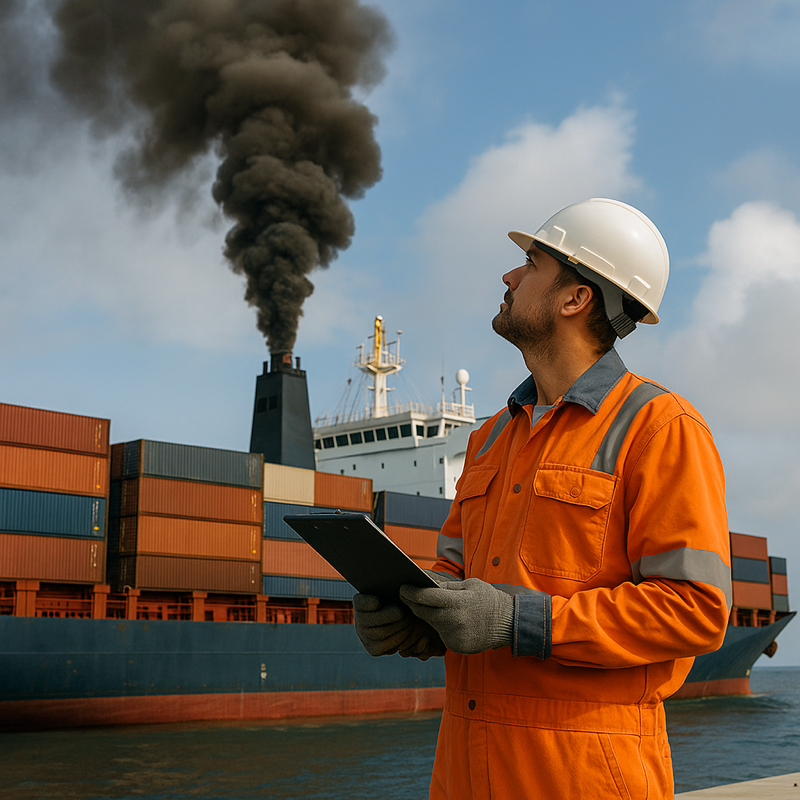As pressure mounts worldwide to make tangible changes to combat climate change, supply chains are under the microscope due to the size and scale of their carbon footprint. In fact, supply chain emissions account for 11.4 times more CO2 emissions than a company’s direct emissions, which is why shippers, carriers, and third-party logistics providers are increasingly collaborating to address the sustainability challenge — in sustainable ways.
But as the saying goes, you can’t manage what you can’t measure, so data and analytics are taking center stage. With greater visibility to emissions outputs of all stakeholders within the supply chain, companies can begin to pinpoint areas of opportunities, then take strategic action to reduce overall emissions. Ultimately, analytics and insights are critical in identifying emission hotspots and driving sustainability initiatives, and we’ll take a closer look at both understanding and reducing supply chain emissions.
Scope 3 Emissions: Understanding Supply Chain Emissions
The U.S. Securities and Exchange Commission (SEC) divides CO2 emissions into three “scopes” that become important to understanding supply chain emissions specifically, particularly in the context of the regulatory environment:
- Scope 1: direct emissions owned or controlled by a company.
- Scope 2: indirect emissions that come from the company’s activities but are not owned or controlled by the company.
- Scope 3: indirect emissions upstream and downstream from the company, which is where the majority of supply chain emissions are.
The SEC in March 2024 adopted rules to standardize climate-related disclosures for investors, ultimately delaying enforcement on Scope 3 reporting, but it’s still critical for companies to continue making progress toward Scope 3 readiness.
International shippers, in particular, need to be aware of global regulatory requirements beyond the minimum SEC requirements in the United States, like the European Union Emissions Trading System (EU ETS), which brings ocean shipping under its climate regulations.
With the value chain including the complexities of both upstream emissions like raw materials and downstream emissions like carrier partner emissions, it’s critical for shippers to prioritize sustainability in procurement practices now. That way, they can be ahead of the curve when the additional reporting requirements are adopted while having a proven track record of sustainability leading to that point, which consumers and investors alike are asking for already.
Starting to deliver on those expectations involves measuring supply chain emissions data down to the shipment level, mitigating emissions, and then offsetting with verified supply chain carbon offsets until the days when zero-emission ships are a reality. It all starts with data, which is what we’ll turn to next.
Leveraging Analytics for Emission Reduction
Shippers and carriers alike need to align around quality data via a trusted measurement framework and with activity-based methods that capture real-time inputs. For example, the Global Logistics Emissions Council (GLEC) Framework is the best-in-class way to measure greenhouse gas (GHG) emissions across all carriers and modes. But how is that data gathered?
Data Collection and Integration
ISO 14083 was published in 2023, providing a standard quantification and reporting of GHG emissions arising from transport chain operations, creating a common framework to ensure apples-to-apples comparisons across supply chain emissions reporting.
Organizations like Greenabl provide user-friendly dashboards to compile emissions data and calculations, like:
- Total CO2e (carbon dioxide equivalent) by metric ton
- Emissions per TEU by metric ton
- Emissions per carrier
- Emissions per TEU by carrier
- CO2e offset percentage
Integrating diverse datasets allows for comprehensive emission analysis with a variety of analytics techniques.
Advanced Analytics Techniques
Knowledge is power, and seeing the supply chain emissions data in a meaningful dashboard visualization is an important start, but companies can get the most out of their data with advanced analytics techniques, whether with in-house data scientists or in consultation with an outside consultant who can help extract deeper insights. A few common techniques include:
- Data Modeling – delivering various visualizations to better conceptualize what the emissions data is showing.
- Scenario Analysis – examining multiple potential outcomes based on certain inputs, such as emissions projections by a carrier to inform procurement decisions.
- Predictive Analytics – forecasting a future outcome based on past decarbonization performance with different providers.
These advanced analytics techniques can uncover insights and identify patterns in emissions data to help shape future supply chain decisions from procurement through to day-to-day operations and many other facets of supply chain management.
Identifying Emission Hotspots
One of the most impactful insights that advanced analytics techniques can uncover is emission hotspots, whether that be particular carriers or even particular countries with outsized carbon output within a company’s end-to-end supply chain.
At a more granular level, some providers can provide lane-level insights, or even CO2e emissions of individual shipments, whether full container loads (FCL), less than container loads (LCL), or air freight.
By then comparing sustainability performance by a variety of metrics and bumping that against a company’s own sustainability goals like certain science-based targets or net-zero timelines, companies can make informed decisions and push for greater outcomes from their suppliers throughout the value chain.
For example, a shipper could leverage emissions insights about an underperforming carrier to switch providers to a more sustainable carrier that is meeting or exceeding expectations or push that carrier to deliver better decarbonization performance. Shippers, carriers, and intermediaries can discover more like-minded relationships with proven partners who consistently deliver sustainable performance, creating mutually beneficial collaborations as both parties seek to meaningfully mitigate emissions.
Effective Supply Chain Emissions Management Begins with Effective Insights and Collaboration
Businesses can utilize insights from supply chain emissions analytics to develop targeted emission reduction strategies, including:
- Route Optimization – finding a more efficient and ultimately more sustainable delivery route for shipments
- Alternative Fuels – investing in electric vehicles, natural gas, or other less carbon-intensive fuels, both in company-owned assets, carrier-partners, or third-party relationships
- Mode Evaluation – comparing ocean vs. air with international shipments and/or truck vs. intermodal on the domestic side
- Supply Chain Carbon Offsetting – investing in verified projects that allow companies to offset the carbon emissions that they aren’t able to eliminate from their supply chains yet
- Digital Partnerships – fostering relationships with partners throughout the supply chain, including digital platforms and associations that can provide unique insights and support in implementing emission reduction initiatives
Greenabl is a prime example of a beneficial digital partnership and platform, as the logistics industry’s first and only cooperative procurement group committed to achieving global supply chain decarbonization.
Greenabl delivers reporting and analytics via customized dashboards, all based on the GLEC Framework, while also providing certified carbon credits in the same platform, including shipment-level supply chain carbon offsetting using Gold Standard and VERRA ratings.
Carriers and intermediaries can also gain access to aggregated demand from shippers for green supply chain providers, plus shipper collaboration by partnering with shippers who have prioritized their commitment to supply chain decarbonization.
Collaborating with other companies pursuing similar decarbonization strategies can benefit all supply chain stakeholders, and Greenabl facilitates that connection.
Reduce Your Supply Chain Emissions With Greenabl Analytics, Insights, and Collaboration
While the regulatory environment may be ever-changing in terms of Scope 3 reporting expectations, it’s clear that international standards and frameworks are being established that all supply chain stakeholders would be wise to align with. Staying abreast of those developments is critical, as is gathering the foundational data to drive decarbonization strategies.
But it’s also clear that simply collecting the data is only half the battle. Supply chain leaders need to analyze that data, either on their own or with the help of a knowledgeable consultant, to extract meaningful insights. Then, they use those insights to make decisions that lead to meaningful sustainability progress, including supply chain carbon offsets, until the dream of net zero becomes a reality.
Greenabl can provide the data, the insights, and the collaboration opportunity. Are you ready to take the next step in your sustainability journey? Contact Greenabl today to leverage analytics in your journey to reducing supply chain emissions.


